How to deal with tomato pests
The larva of the Colorado potato beetle eats two to three centimeters of a green leaf per day. The favorite food of these beetles is potato tops. But if there are few potato leaves, then the beetles willingly switch to tomatoes. Considering that tomatoes and their pests are enough, the tomato grower should always be on the lookout.
Consider what pests of fruits and plants are in the open field and what are the methods of treating tomatoes for them. In the article you will find photos of pests with descriptions of treatment methods.
The content of the article
What will happen if you do not get rid of pests
Are you ready to give pests part of your crop? Surely, you were not pursuing such goals when, on dark winter evenings, you warmed and highlighted the newly emerged tomato seedlings.Leaving everything to chance and not dealing with pests is an inexpedient and dead-end path. for those who count on results.
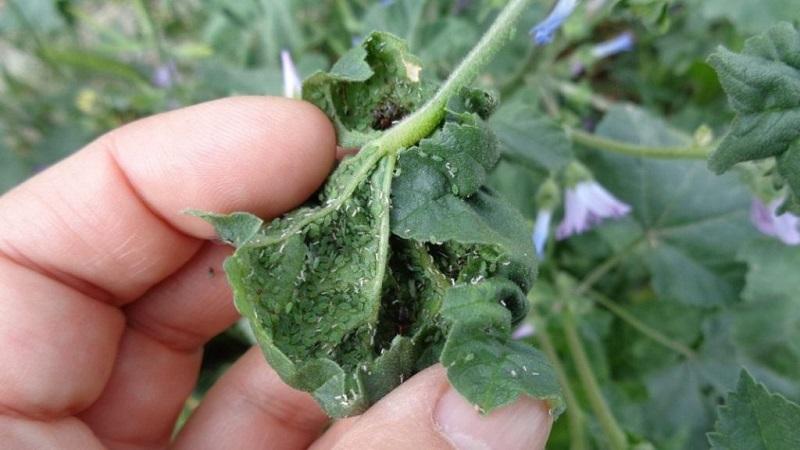
It is imperative to get rid of the "saboteurs" so that:
- the harvest of the current year was not affected;
- the soil was not unusable for planting the next season.
What are the pests and methods of dealing with them
Consider the most common outdoor tomato pests and how to deal with them. The same methods can be applied to growing tomatoes in greenhouses.
Whitefly
This is a small midge with white wings... The pest is usually detected by touching the plant. If you touch a tomato, a flock of white winged insects will fly up. The photo shows whiteflies on tomato leaves.
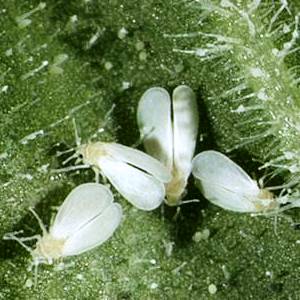
There are other visual signs of a pest:
- spots on tomato leaves (ranging from whitish to black);
- shiny transparent (like varnish) plaque on the sheets;
- curling and wilting of leaves occurs.
Whitefly larvae are attached to tomato leaves. They stick to the plant and extract juices and nutrients from the leaves.
From enzymes secreted by insects, leaves are covered with a shiny bloom... The plaque contains spores of fungi that multiply in the leaf. The leaf changes color: white spots appear, which subsequently turn black.
How to get rid of:
- Fly tape... An adult whitefly is attracted to the sweet smell that comes from the ribbons. It will adhere as soon as it sits on the surface. To save money, the sticky tape is best cut into pieces and inserted into a split stick stuck in the ground between the tomato bushes. After adhesion of whiteflies, such a tape is burned, and a new fragment is put in its place. You can make a sticky trap yourself. A sticky mass of castor oil with the addition of honey in arbitrary proportions is spread on a sheet of cardboard. The sheets are laid out on the ground or inserted into a split peg between the plants. Sitting on such a mass, the pest will get stuck in it and will not be able to fly away.
- Exposure to temperature... Whiteflies, like moths, fly into the light. Their wings are thin and easily damaged. These features can be used to destroy them. Leave a lighted kerosene lamp or a regular lamp between the bushes at night. Insects will die from burns on hot glass.
- Using garlic tincture... It is used to control whitefly larvae and to remove varnish from leaves. The recipe is simple: add 150 g of garlic per liter of water and stand for 5 days.If you dilute one tablespoon of such a tincture per liter of water, we get an effective means for irrigating tomato leaves and removing sticky plaque.
Important! The treatment is repeated every 3-4 days until the pest disappears completely.
Medvedka
Medvedka lives in holes in the ground... It looks like a crab or a large legless grasshopper. Here she is in the photo:
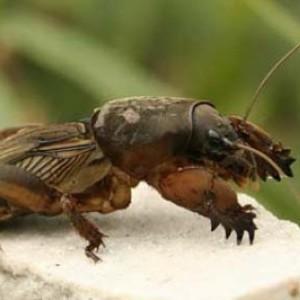 Medvedka harms all plants, including tomatoes... She digs her holes in the upper layers of the soil, cutting the roots of plants with her claws or gnawing them. Many plants die immediately.
Medvedka harms all plants, including tomatoes... She digs her holes in the upper layers of the soil, cutting the roots of plants with her claws or gnawing them. Many plants die immediately.
Getting rid of a pest is difficult... Basically, all methods that are sparing for the crop growing on the site are reduced to mechanical catching of bear specimens. Traps are set to destroy it.
For example, having found pest moves in the soil, I dig a hole in the middle of the channel, into which a plastic bottle cut in height is placed below the level of the tunnel. Passing on its own turns, the bear falls into a trap and cannot get out of the deep bottle.
Manure pits are made similarly for catching a bear... The insect is not indifferent to fresh manure and often seeks there for wintering. The pits are reviewed from time to time, the bear is caught.
Gardeners advise to fill the habitats of the bear with soapy water for catching (dissolve about 50-60 g of washing powder and 10 g of laundry soap in 10 liters of water). Or use chemical means of protection (for example, Medvegon, Fenoxin Plus, Medvetox according to the manufacturer's instructions). But then there is a risk of poisoning tomatoes.
Bed bugs and ticks
Large pests are not the only threat to plants. There are a number of almost invisible to the eye of small bugs and ticks that harm tomatoes (see a photo of a tick below).Visually noticeable traces on the plant will help to detect small pests.... Among such traces, the most obvious are the cobweb and the changed color and structure of the tomato bush.
| Pest type | Features / Description | Non-chemical control methods |
| Bug bugs
|
If you notice small green bugs (sometimes with brown or brown blotches) on the tomatoes with a flat shell on the back, you should know that you have a stink bug. It feeds on plant sap. He does not neglect tomatoes either. After its bites, white-yellow spots remain on the surface of fruits, stems and leaves. | 1. Mechanical collection. Shield bugs slowly crawl over the plants. The easiest way to get rid of them is to pick them up with your hands and burn them.
2. Therapeutic spraying:
Carefully process the tomato bushes with the prepared solutions. The procedure is repeated every few days. |
| Rust mite
|
A very small mite. It feeds on the aerial part of the tomato bush. It sucks out juices and can penetrate into the trunk, leaves and fruits. How its activity manifests itself: the leaves begin to curl and can become covered with cracks of a brown or rusty color. | So far, no effective ways of protecting plants from rust mites have been found. Experienced tomato growers advise primarily preventive methods. Such as the:
|
| Spider mite
|
The tick drinks the sap of the plants. It bites mainly leaves, which begin to become covered with small colorless dots, turn yellow and dry out. Tangles of white threads appear on the tomato, similar to cobwebs. If there are many mites, the leaves dry out and the tomato plant may die. More often than outdoors, spider mites attack tomatoes in the greenhouse.
|
What to use to fight:
|
Attention! Insecticides are mostly toxic. Given that tomatoes are grown for the sake of eating fruits, it is advisable to give preference to natural remedies.
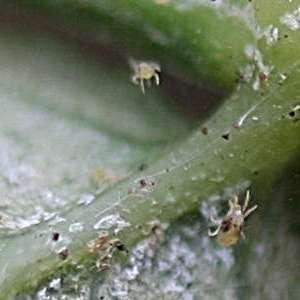
If tomato bushes are severely affected by pests and folk remedies are not effective enoughare turning to chemicals.
In the fight against bedbugs and ticks, drugs are most effective:
- Anti-mite;
- Fitoverm;
- Actellic;
- Vertimek;
- Karbofos.
For safety reasons, preparations are diluted and dosed strictly according to the manufacturer's instructions..
Attention! When spraying chemicals, be sure to follow the manufacturer's precautions on the packaging. Typically, this is the use of gloves and a respirator when working with a liquid solution.
Colorado beetle
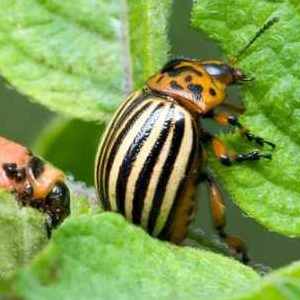 Almost every vegetable grower is familiar with this striped pest.
Almost every vegetable grower is familiar with this striped pest.
Most of all, potato bushes suffer from the pest, but tomatoes also get it. Tomatoes can be harmed by both the beetles themselves and their pink larvae with black specks... In three weeks, the larvae will easily eat the whole bush.
Folk remedies in the fight against beetles, as practice shows, are not particularly effective... The safest method for tomato bushes is to pick pests from the bushes with your hands and destroy them.
From chemistry drugs will help Bankol, Mospilan, Typhoon. Apply according to the instructions.
Nematode
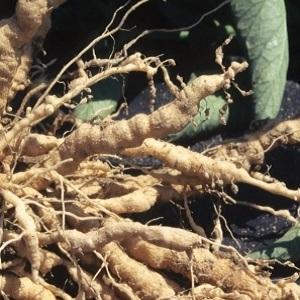
Nematodes - worms that feed on plant juices, including tomatoes... The larvae of the worms penetrate through the ground into the roots of tomatoes.
Bubble brown swellings appear on the roots and the roots themselves, after 1-2 weeks, begin to rise from the soil. Plants wither and stop growing.
If such a misfortune happened to your tomatoes, it is better to pull out the infected bushes and burn... It is recommended to spill the earth with boiling water. This will save the neighboring tomato bushes from the pest.
For complete destruction, chemical agents are produced: For example, Nemagon or Karbofos.
Attention! Plants can be planted on a chemically treated area only next year.
Wireworm
Another a pest that eats potatoes, but does not refuse tomatoes.

The wireworm eats the roots of tomato bushes. He likes to live in a slightly sour land, so liming the earth or embedding wood ash or ash into the soil will help to fight it (1 tablespoon per tomato bush).
In the spring, on the plot with tomatoes, you can make traps for the wireworm: dig 5-6 large potatoes into the ground, which are then dug out together with the wireworm, which has bitten into the tubers, and destroyed.
Good results against young wireworms are obtained by irrigating the land with a strong solution of potassium permanganate before planting tomatoes in the ground... Recipe: dilute to 5 grams of crystals for 8-9 liters of water). Solution consumption - 0.5 l per well.
Gnawing scoop
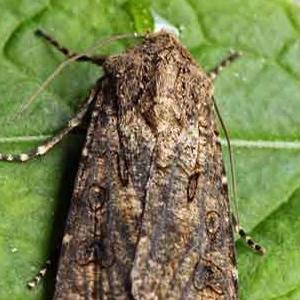 Scoop - a butterfly that looks very similar to a moth.
Scoop - a butterfly that looks very similar to a moth.
The danger for tomatoes is created by larvae - caterpillars. They gnaw first of all the leaves. And then they switch to tomato fruits.
How to get rid of:
- remove the pest manually;
- spray the bushes with garlic infusion. The infusion is prepared for 3-4 hours by mixing 400 g of chopped garlic and 10 liters of water;
- irrigate the bushes with a solution of wormwood. 650 g of bitter blue wormwood is brewed with 5 liters of boiling water and kept for 2-3 days. Irrigation solution is obtained by mixing 1 liter of infusion with 9 liters of water.
Aphid
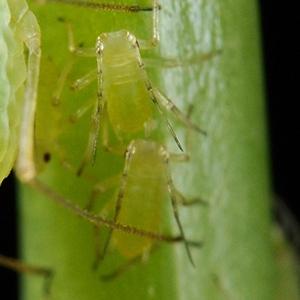 Aphids - destroyer of tender young leaves of tomatoes... This small pest attacks entire colonies. They suck the juice out of tomatoes, depriving the plant of nutrition.
Aphids - destroyer of tender young leaves of tomatoes... This small pest attacks entire colonies. They suck the juice out of tomatoes, depriving the plant of nutrition.
Waste products and the presence of aphids are detrimental to young greenery. The leaves begin to curl immediately.
The most working aphid remedies:
- Tobacco tincture. 200 g of tobacco mixture is added to 5 liters of hot water and insisted for a day. After straining, the bushes are sprayed (100 g of laundry soap can be additionally dissolved for the entire volume of the infusion).
- Garlic sprays. For several hours, 200 g of garlic is insisted in 5 liters of water. The solution is sprayed onto the tomato leaves.
May beetle larva (beetle)
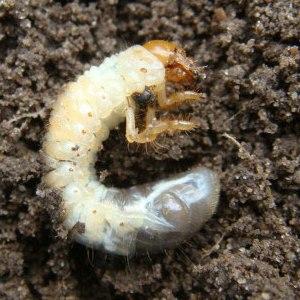 May beetle larvae grow and develop in the ground for 3-4 years... While in the soil, they eat whatever they come across, including gnawing at plant roots, including tomato roots.
May beetle larvae grow and develop in the ground for 3-4 years... While in the soil, they eat whatever they come across, including gnawing at plant roots, including tomato roots.
Given the long development cycle of larvae, spring and autumn tillage gives good results. When digging, the larvae are easy to find and destroy.
Insecticide preparations for larvae: Zemlin, Antichrushch, Aktara.
Prevention methods
It is easier to prevent than to cure later. This truth is also true in the gardening business. If you take preventive measures, then the likelihood of pest damage to tomatoes will decrease significantly.
How to prevent pests:
- Carry out pre-planting soil treatment before planting tomatoes. Shed the earth with boiling water or a solution of copper sulfate (1 tablespoon of the drug is taken per liter of water). It is advisable to dig deep into the soil throughout the entire area.
- Immediately remove plant residues from the site to avoid the spread of pests.
- Observe the crop rotation of the soil.
- Select tomato varieties and hybrids that are resistant to pests and diseases for growing on the site.
Interesting on the topic:
Secrets of planting and caring for tomatoes
How often to water tomatoes in the heat to get a good harvest
What to do when tomatoes grow poorly
How to grow and tie tall tomatoes
How to feed tomatoes during flowering in a greenhouse and fruiting
Let's sum up
Pest control is essential to preserve the tomato crop. There are chemical means of struggle, there are natural ones. Given that tomatoes are intended for human consumption, it is best to avoid using chemicals when dealing with pests. Here folk methods and means will come to the rescue.
Don't neglect prevention. And then the harvests of tomatoes will remain intact by the pests and will completely go to you.